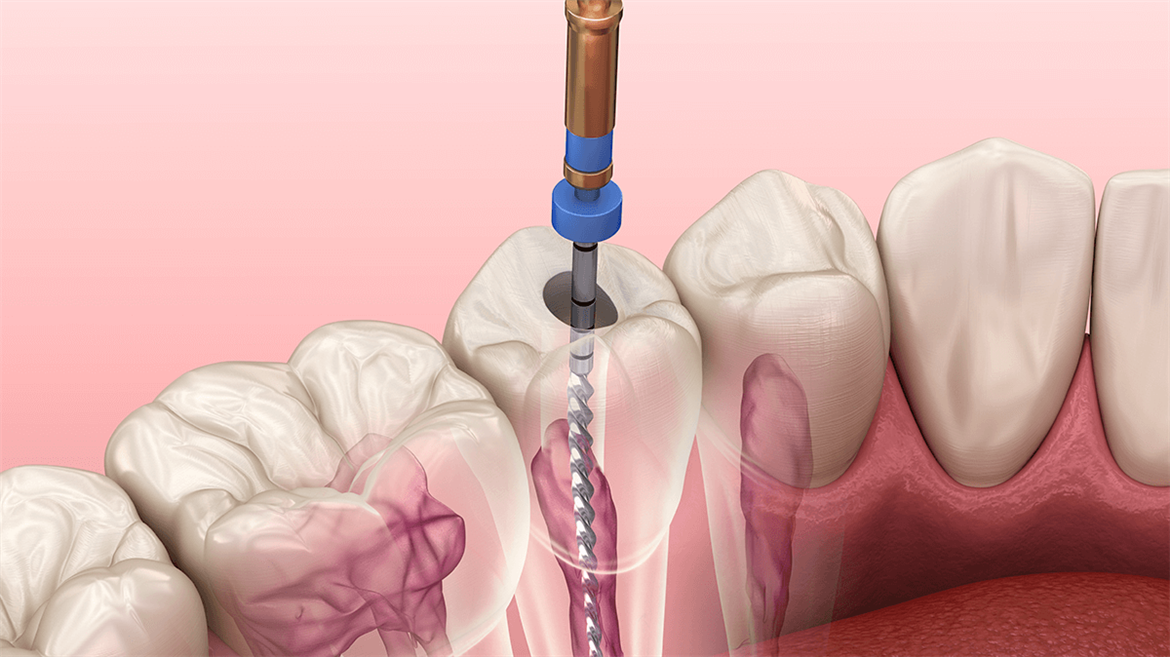Root Canal Treatment

What is Root Canal Treatment?
Root canal treatment, also known as endodontic treatment, is an application to the diseased pulp of the tooth, which aims to eliminate the infection in the patient's tooth and to protect it from further microbial invasion that may occur after the cleaned tooth. Pulp chamber and root canals; These are spaces inside the tooth that are naturally occupied by nerve tissue, blood vessels, and decay-causing bacteria. Together, these components make up the essence of the tooth.
Endodontic treatment involves the complete removal of these structures and subsequent shaping and cleaning of cavities; It includes decontamination with small files and special solutions followed by refilling of decontaminated canals.
Who Can Have Root Canal Treatment?
The purpose of root canal treatment is to reduce toothache and keep the tooth healthy for a longer period of time. Therefore, people with any toothache or infection can have root canal treatment. This application aims to reduce toothache and keep the tooth healthy for a longer time by cleaning and filling the channels in the tooth. A dentist's opinion is needed to perform root canal treatment. The dentist will evaluate the condition of the tooth and decide whether root canal treatment is necessary.
The duration of root canal treatment may vary from patient to patient. Usually, a single session root canal treatment for a tooth takes several hours. However, more sessions may be needed due to factors such as the condition of the tooth or the number of channels in the tooth. In these cases, endodontic treatment may take several days or weeks. As a result of the dentist's evaluation, the most appropriate treatment method for the patient's condition is determined and it is decided how long the operation will take.
What is the Structure of a Tooth?
The structure of a tooth may differ from its external appearance, but it usually consists of the following components:
- Gingiva: The tissue outside the tooth that protects and supports the teeth.
- Tooth enamel: A thin layer that covers the outer surface of the tooth and serves to give the color of the teeth.
- Dentin: The tissue inside the tooth that makes up most of the structure of the tooth and ensures the durability of the tooth.
- Pulp: The part of the tooth that contains the channels leading into the tooth and forms the living tissue of the tooth.
- Root: The part inside the tooth that is connected to the gingiva. The root of the tooth provides the strength of the tooth and prevents the tooth from falling out by establishing a strong connection to the gum.
In Which Situations Is Root Canal Treatment Performed?
Symptoms of pulp infection include: pain when eating or drinking hot or cold foods and beverages, pain when clenching or chewing teeth, or a loosening tooth. As the infection progresses, these symptoms usually end with the death of the pulp. By this time, however, the infection had actually spread to the root canal system.
Later, the following symptoms may appear: recurring pain when squeezing or chewing, swelling of the gingiva next to the infected tooth, discharge from the infected tooth, swelling of the face or jaw, and darkening of the tooth color. Root canal treatment is mostly needed when:
Toothache: If there is severe pain, root canal treatment may be necessary because toothache sometimes occurs as a result of the growth of bacteria in the canals inside the tooth.
Infection: In some cases, infections occur as a result of the proliferation of bacteria in the canals inside the tooth.
Decayed tooth: Canal treatment may be needed, because in a decayed tooth, bacteria can reproduce in the canals inside the tooth and therefore infection may occur.
Tooth loss: Infection may occur in the leftover canals in the space formed in the place of this tooth as a result of the patient's loss of a tooth.
Only an experienced dentist can determine whether root canal treatment is needed. Therefore, it is recommended that people with toothache or infection should consult a dentist immediately. The dentist will evaluate the condition of the tooth and decide whether root canal treatment is necessary.
How is Root Canal Treatment Performed?
Root canal treatment is mostly performed by following these steps. First of all, the dentist evaluates the condition of the sick tooth and decides whether root canal treatment is necessary.
It then numbs the tissues under the tooth and makes a hole in the tooth. In this way, the channels inside can be accessed. The dentist completely cleans this area and removes all the bacteria and other harmful substances in the tooth.
The cleared channels are refilled. During this process, the cavities formed in the tooth are filled and the tooth is strengthened. Finally, a cap (protector) is put on top of the tooth. This cover ensures the protection of the tooth and the reduction of post-procedure pain.
These steps form the general structure of root canal treatment. However, it should be noted that each situation may differ and the dentist will evaluate the procedure individually. For this reason, only a dentist can give the most accurate information on how to perform root canal treatment.
After the root canal treatment is completed, it is very important for the patients to maintain the routine care of their teeth. These people should stay away from hard foods until the process is concluded. After the last session, the repaired tooth should no longer be painful, but it is normal to feel pain for a few days. If the person is faced with symptoms such as pain and swelling despite using painkillers, he or she should definitely see a dentist without wasting time.

